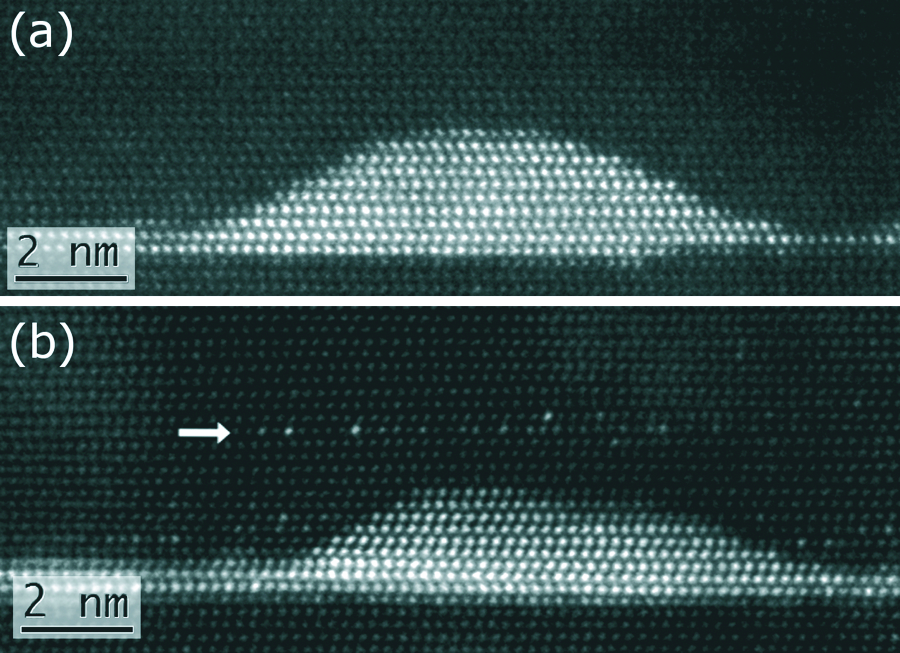GaN quantum dots in an AlN matrix are good emitters in the ultraviolet. In order to expand the emission range toward the visible, we dope them with thulium (Tm) atoms. Can we directly see the effects of doping? Yes, thanks to the FEI transmission electron microscope, operated in the transmission scanning mode with a high angular annular dark field detector (STEM-HAADF). In this mode, the image is very sensitive to the atomic number Z, the number of protons and electrons in an atom. More precisely, we have shown that the intensity variations of the white dots representing atomic columns on the high resolution image are proportional to the number of Tm atoms in each column, because T
m is heavy (Z=69).
With this technique, we made evident that some of the dopants tend to exit the quantum dots and settle above them (see figure). We think that the main mechanism is a strain-driven diffusion. Indeed, the Thulium atoms are found 3 or 4 monolayers above the QDs, where the AlN cap layer has relaxed its strain. This conclusion is further supported by the observation of other Tm atoms decorating the core of threading dislocations. A strategy is thus needed to trap the dopants in the dots!

STEM-HAADF micrograph of a GaN quantum dot (bright contrast) in an AlN matrix (dark contrast).
a) The dot is undoped. b) The overbright white dots pointed by the arrow indicate the unwanted presence of Tm dopants in AlN. Our technique allows quantifying them.